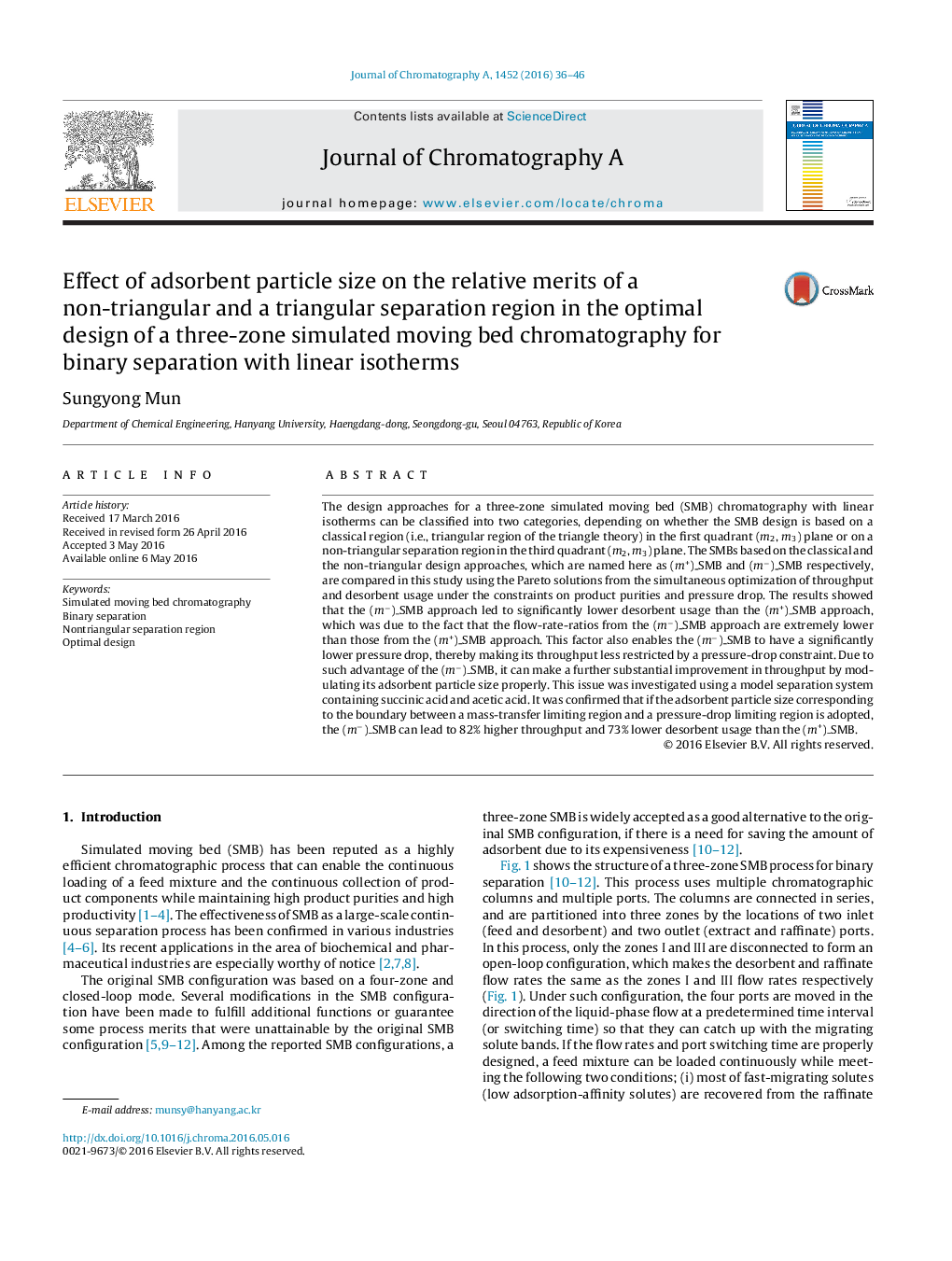| کد مقاله | کد نشریه | سال انتشار | مقاله انگلیسی | نسخه تمام متن |
|---|---|---|---|---|
| 1198837 | 1493474 | 2016 | 11 صفحه PDF | دانلود رایگان |
• The two design approaches for a 3-zone SMB for binary linear system were compared.
• They are a triangular and a non-triangular separation-region approaches respectively.
• The latter approach led to significantly lower desorbent usage than the former.
• The optimal particle size is between the pressure and mass-transfer limiting regions.
• At the optimal particle size, the latter led to 82% higher throughput than the former.
The design approaches for a three-zone simulated moving bed (SMB) chromatography with linear isotherms can be classified into two categories, depending on whether the SMB design is based on a classical region (i.e., triangular region of the triangle theory) in the first quadrant (m2, m3) plane or on a non-triangular separation region in the third quadrant (m2, m3) plane. The SMBs based on the classical and the non-triangular design approaches, which are named here as (m+)_SMB and (m−)_SMB respectively, are compared in this study using the Pareto solutions from the simultaneous optimization of throughput and desorbent usage under the constraints on product purities and pressure drop. The results showed that the (m−)_SMB approach led to significantly lower desorbent usage than the (m+)_SMB approach, which was due to the fact that the flow-rate-ratios from the (m−)_SMB approach are extremely lower than those from the (m+)_SMB approach. This factor also enables the (m−)_SMB to have a significantly lower pressure drop, thereby making its throughput less restricted by a pressure-drop constraint. Due to such advantage of the (m−)_SMB, it can make a further substantial improvement in throughput by modulating its adsorbent particle size properly. This issue was investigated using a model separation system containing succinic acid and acetic acid. It was confirmed that if the adsorbent particle size corresponding to the boundary between a mass-transfer limiting region and a pressure-drop limiting region is adopted, the (m−)_SMB can lead to 82% higher throughput and 73% lower desorbent usage than the (m+)_SMB.
Journal: Journal of Chromatography A - Volume 1452, 24 June 2016, Pages 36–46
